
“Service Statistics” section helps you monitor statistics of OpenTrade Commerce services requests, review translated data volume, estimate caching efficiency and be aware of current service rate you are currently connected to.
Location in the admin area: Reports > Service statistics
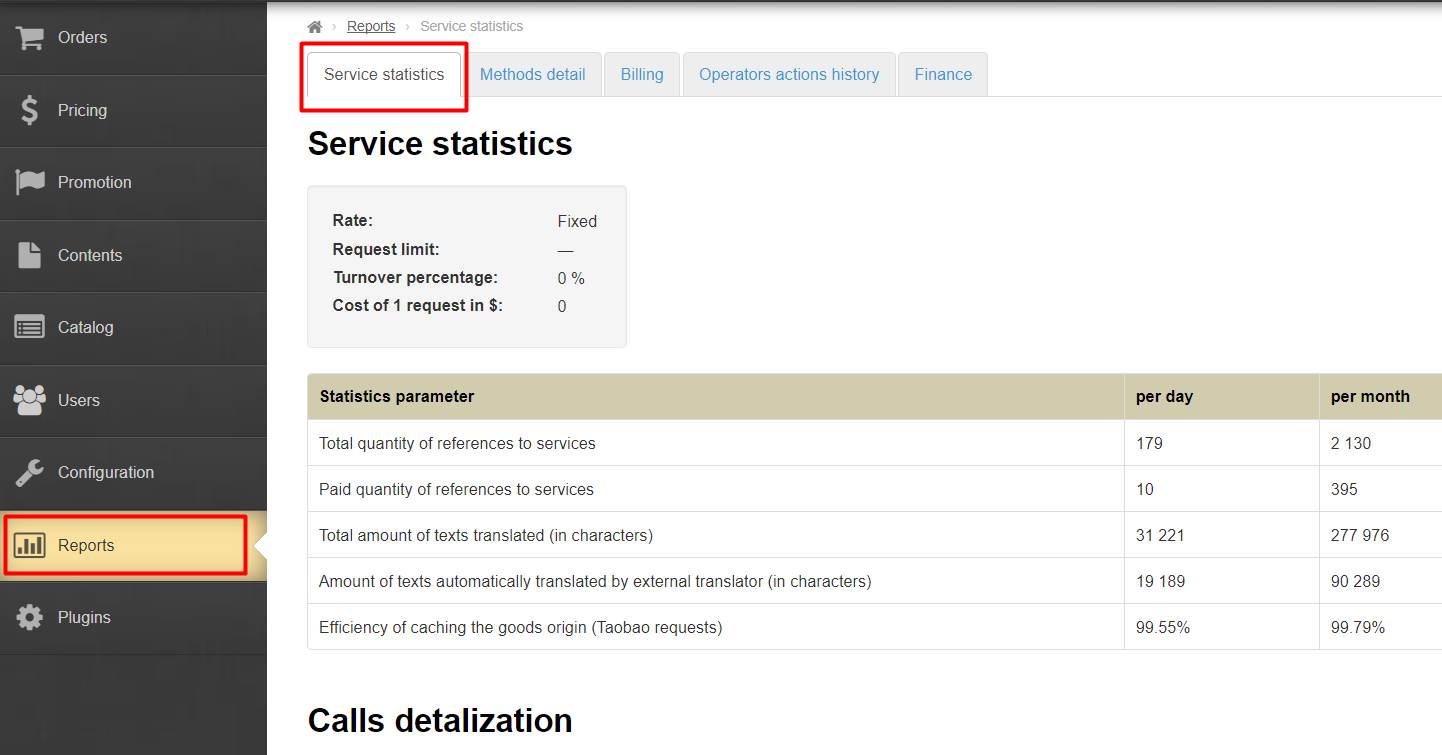
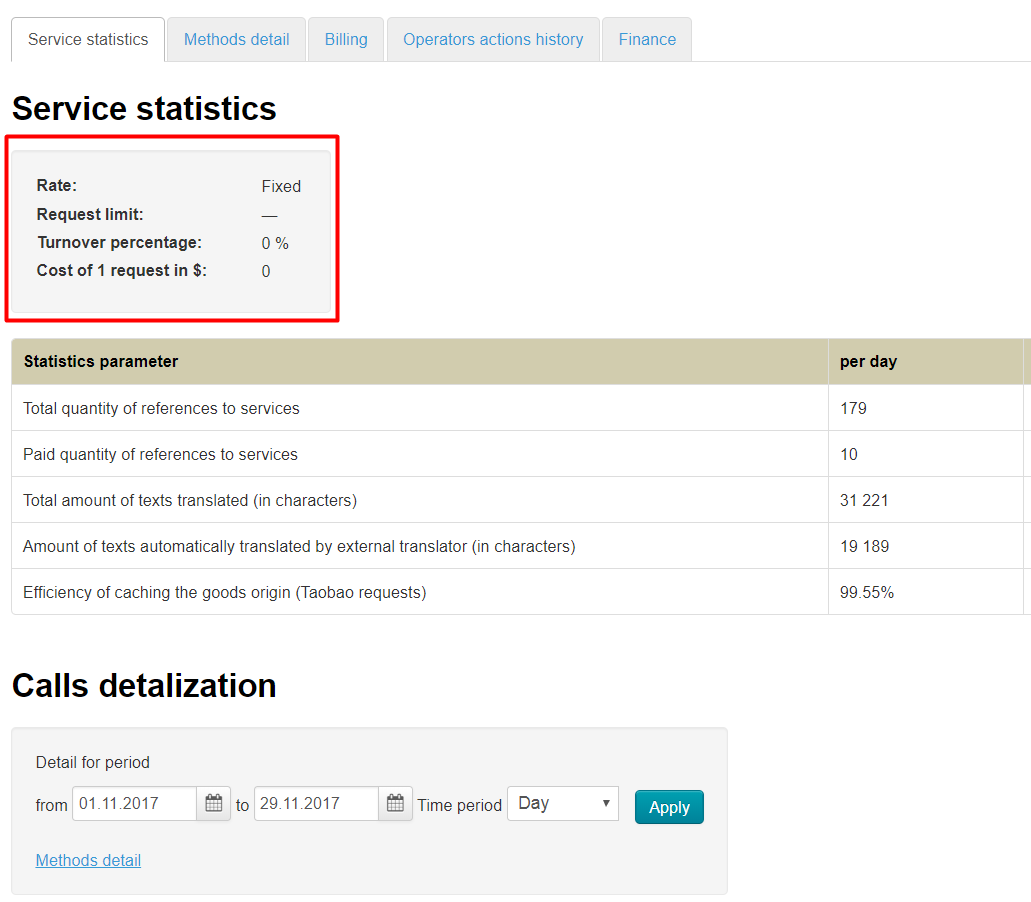
“Service Statistics” section contains information about service payment rate website is connected to. There are the following service payment rates at the moment:
Sandbox.
Call.
Turnover .
You can check current rates, cost and terms of use here: https://en.otcommerce.com/products/service-payments
General information will contain certain information depending on your service payment rate:

Statistics parameters are displayed by time intervals: per day, per month and total.
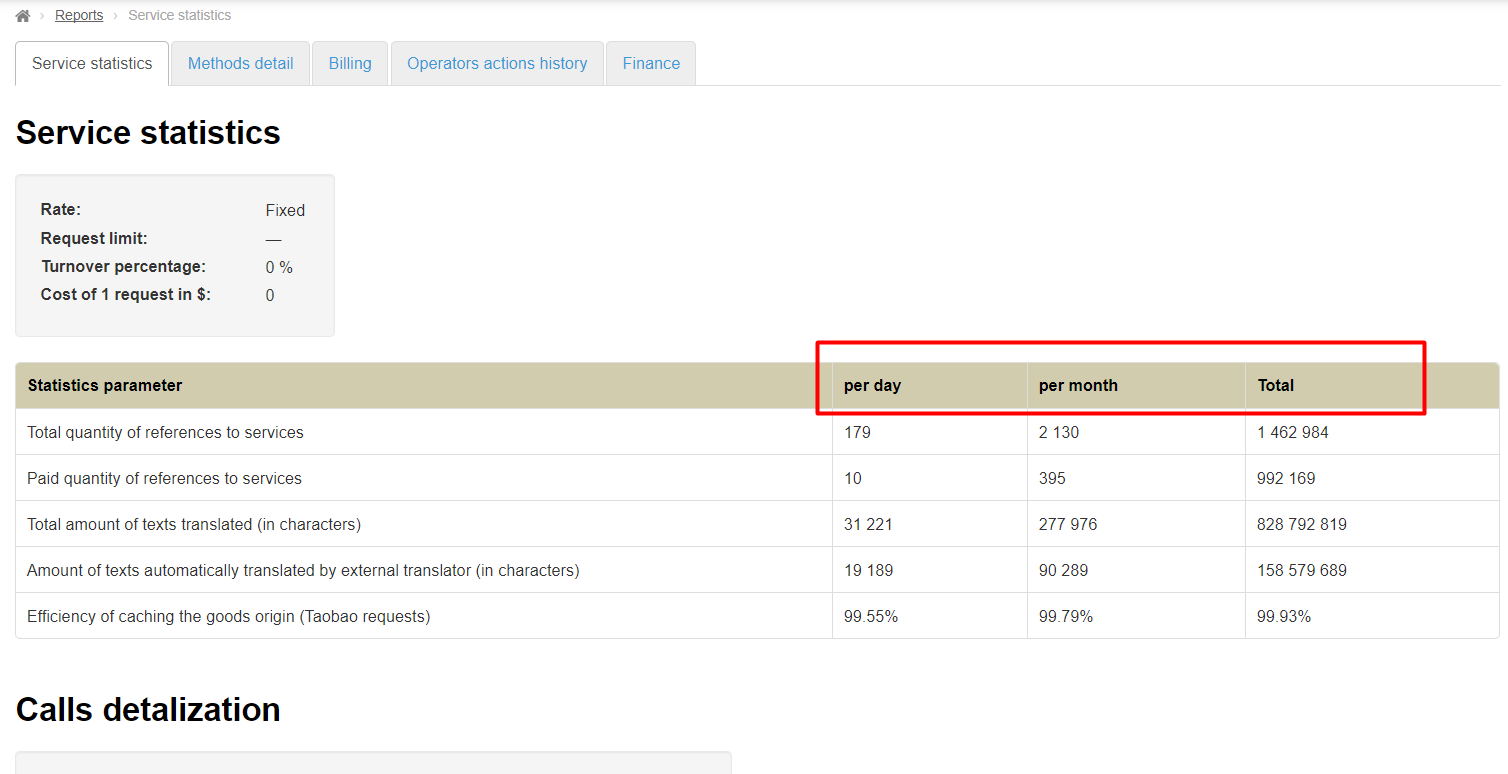
All data from providers (goods, prices, descriptions, etc.) and users' date are received through OT Platform services.
Services handle catalog, goods cards, show categories list, provide goods search and buyer information, etc.
Call is request to these services.
Call is rate – это каждое обращение к этим сервисам. For example, user opens product page, site requests information about this product, counter defines it as 1 call.
Services are divided into 2 categories:
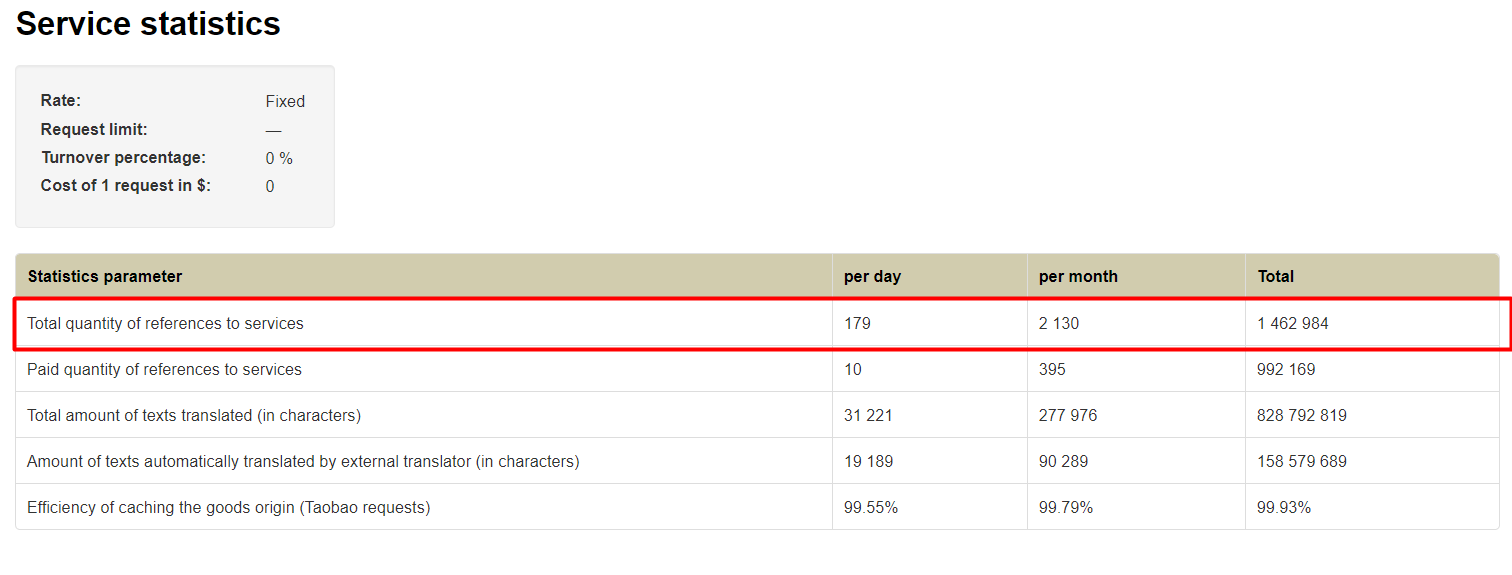
Total calls section contains information on paid and free calls and show total load your site receives and OT Services.
Free calls section includes data requests of admin panel, users' data, their shopping carts with goods, orders.
Users also use free calls when authorise and visit their personal account and sopping cart, for example. All other calls are paid ones.
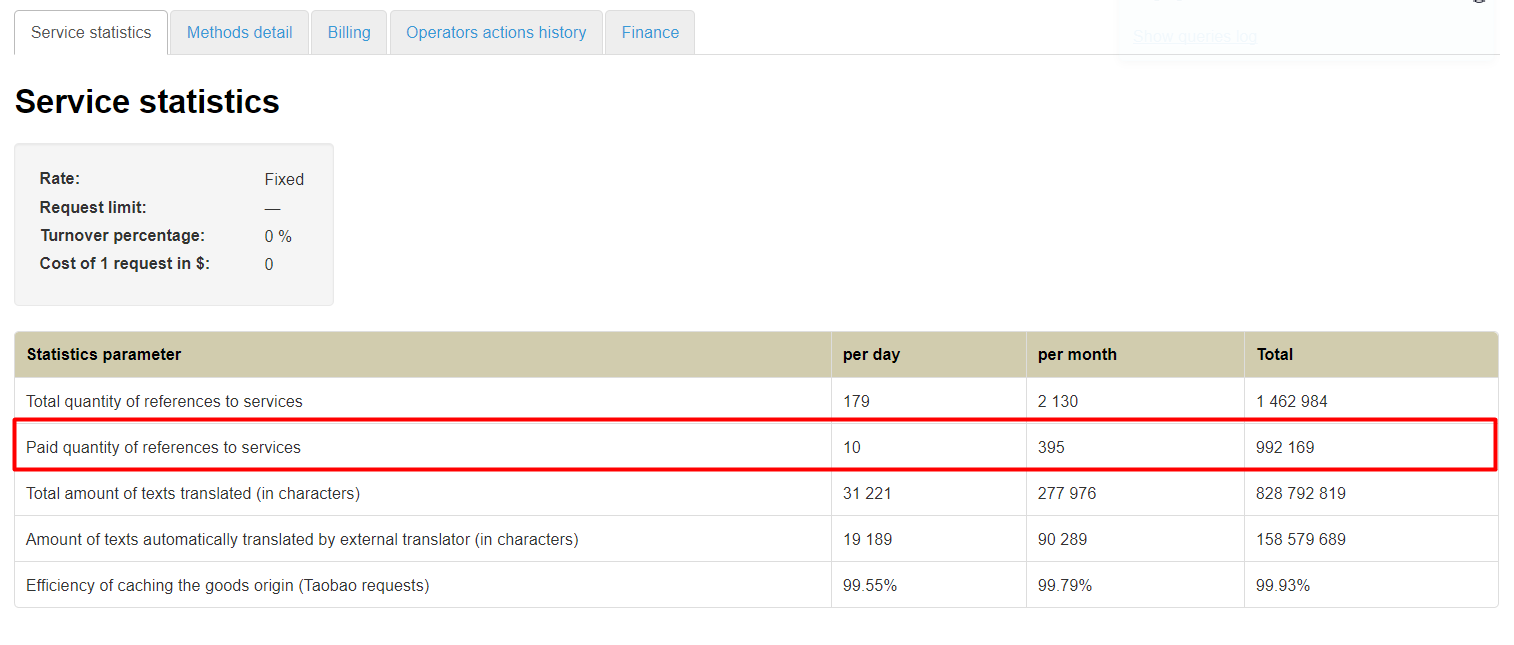
Paid calls are those that give information from providers (search, categories, product card). This information includes goods cards, categories and search.
Part of OT Commerce service payment rates are based on this principle, therefore number of calls can define service payment rate choice.
It's reasonable to start with service payment rate based on number of calls if you just started working with website and number of calls is insignificant.
It's reasonable to start with service payment rate based on turnover if there are many users on your website and number of calls is significant.
Check service payment rates and their descriptions.
Thus, it turns out: we take a call as a paid one if OT Box “takes” something from Goods Provider (for example, Taobao). Paid call influences service payment sum. We take a call as a free one if OT Box takes something from its database. |
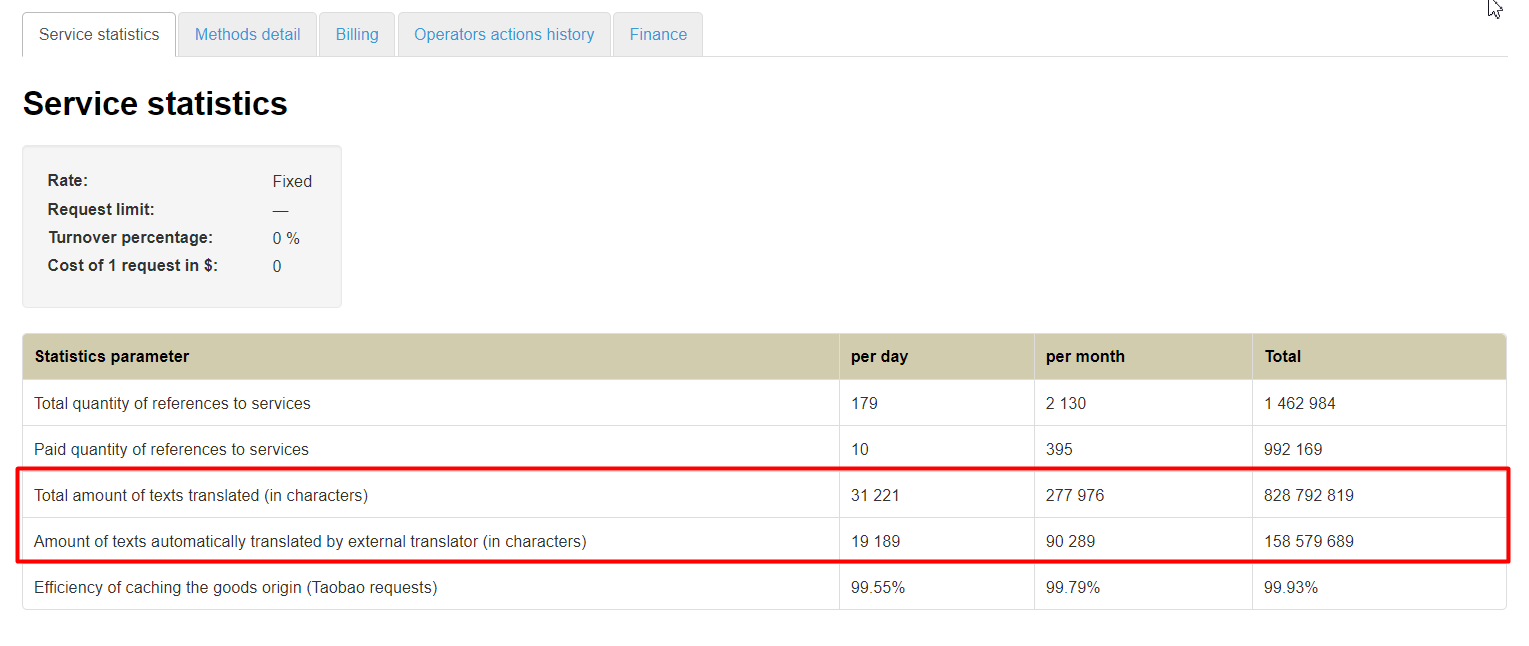
Each product card includes text content: product title, characteristics, description and other texts in Chinese. All these texts are translated at the expense of OT platform services . “Total amount of texts translated (in characters)” and “ Amount of texts automatically translated by external translator (in characters)” sections show volume of texts translated while the customer was browsing products.
Note – automatical translation by Google costs 20$ for each million of symbols. This information shows how much you could pay if you connected Google translate service. At the same time, service statistics data allow you to understand the amount of website translation by Google translator into inavailable language.
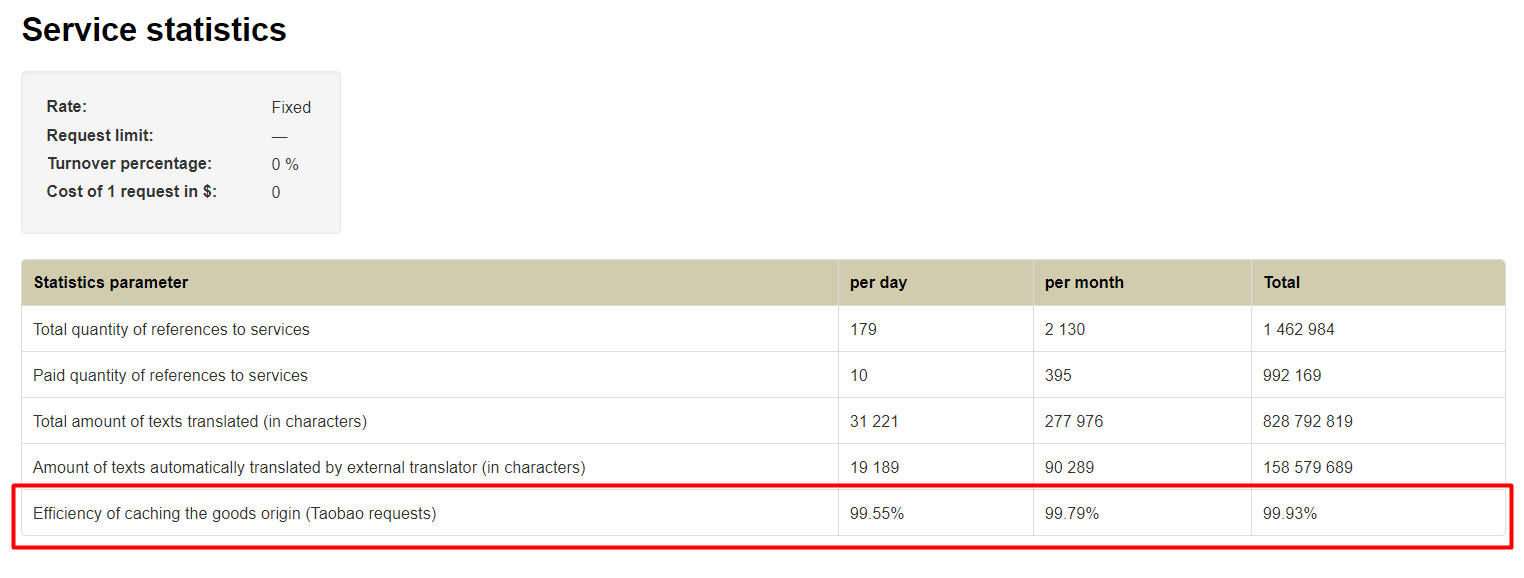
Taobao site is accessed five times (product, shipping cost, discount, seller’s details, seller’s listings) when composing product card. Plus goods descriptions and reviews are taken from goods provider. It takes some time to receive this information. In addition, frequent calls to Taobao for such information are very undesirable.Caching system is provided to speed up the acquisition of required information from Taobao. Data received earlier from Taobao is stored there.
There is a cache where data from Taobao is stored to shorten information delivery time and “not to make Taobao nervous”. Data is updated approximately once a day (data that have to be updated with longer time interval is updated less frequently).
Efficiency of caching the goods origin (Taobao requests) shows the amount of information (%) taken from cache instead of requesting Taobao directly.
To shorten information delivery time and not to get on Taobao’s “nerves” there is a cache where data from Taobao stored. Data is updated approximately once a day (the data that have to be updated with longer time interval is updated less frequently).
The Product Source Caching Efficiency line shows the amount of information (%) taken from the cache instead of requesting Taobao directly.